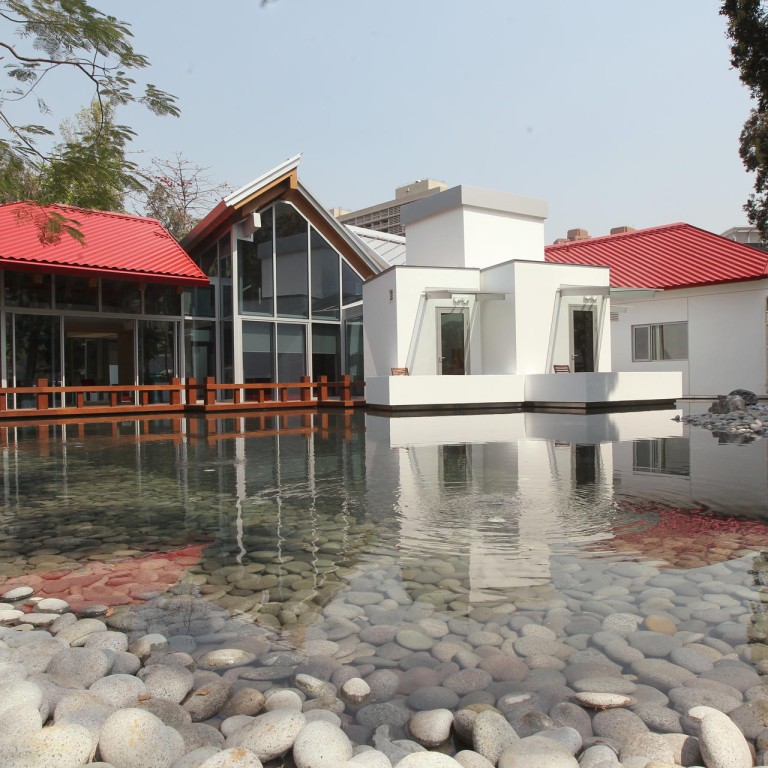
UK's Maggie's Cancer Caring Centre opens first overseas branch in HK
UK cancer network opens first overseas branch in HK, styling it to make patients feel at home
A British cancer network known for its centres' architecture has opened its first overseas branch in Hong Kong with a design fitted to the city's limited space and Chinese culture.
Maggie's Cancer Caring Centre Hong Kong, designed by renowned Canadian-American architect Frank Gehry, opened at Tuen Mun Hospital last week.
The centre is designed around a central living room and spacious kitchen, surrounded by several rooms, with views of gardens and water outside.
Gehry and other architects worked on the project on a pro bono basis. The centre is open to all cancer patients and their caregivers, providing free therapy, counselling and other services.
In each direction is a different kind of garden ... It is this idea of creating a lot of difference in a very small space
"When you're in the central space, you have views to many different directions. In each direction is a different kind of garden ... It is this idea of creating a lot of difference in a very small space," said London-based landscape architect Lily Jencks, 32, who worked with Gehry.
She is the daughter of Maggie Keswick Jencks, who founded the centres, and granddaughter of John Keswick, chairman of Hong Kong-based conglomerate Jardine Matheson in the 1950s.
Her mother - like her father, also a landscape designer - made blueprints for the first centre in Edinburgh before breast cancer took her life in 1995 at age 53.
The idea was to have a home-like place for cancer patients near hospitals, and 13 other centres have since opened in Britain.
A preliminary centre, opened in Hong Kong in 2008, had more than 10,000 visits in a year. The initial funding was from the Hong Kong-based Keswick Foundation established by Maggie and her father. Having lived in Shanghai and Hong Kong, Maggie had a keen interest in Chinese culture. The centre's design was based on Chinese gardens, on which she wrote a book.
"The use of some very simple things, like the round table, a very classic Chinese way of eating … outdoor space for , which is very important here," Lily said.
No appointment is needed before visiting the centre and it has no reception at its entrance.
"This is like a home," said Charles Jencks, 73, Maggie's husband and co-founder of the centres. "You need a place like this with so much chronic medicine. That's why we hired very good architects, top world architects."
He said the cancer centres had become a pioneer building type designed for cancer patients. There are designs for different aspects of self management, including quiet thinking time and meeting other patients.
"With all the primary care today, people live beyond cancer," Charles said. "Many people will live with their chronic diseases. The patient really has to take an active role and you need to meet other patients. That's what happens here."
